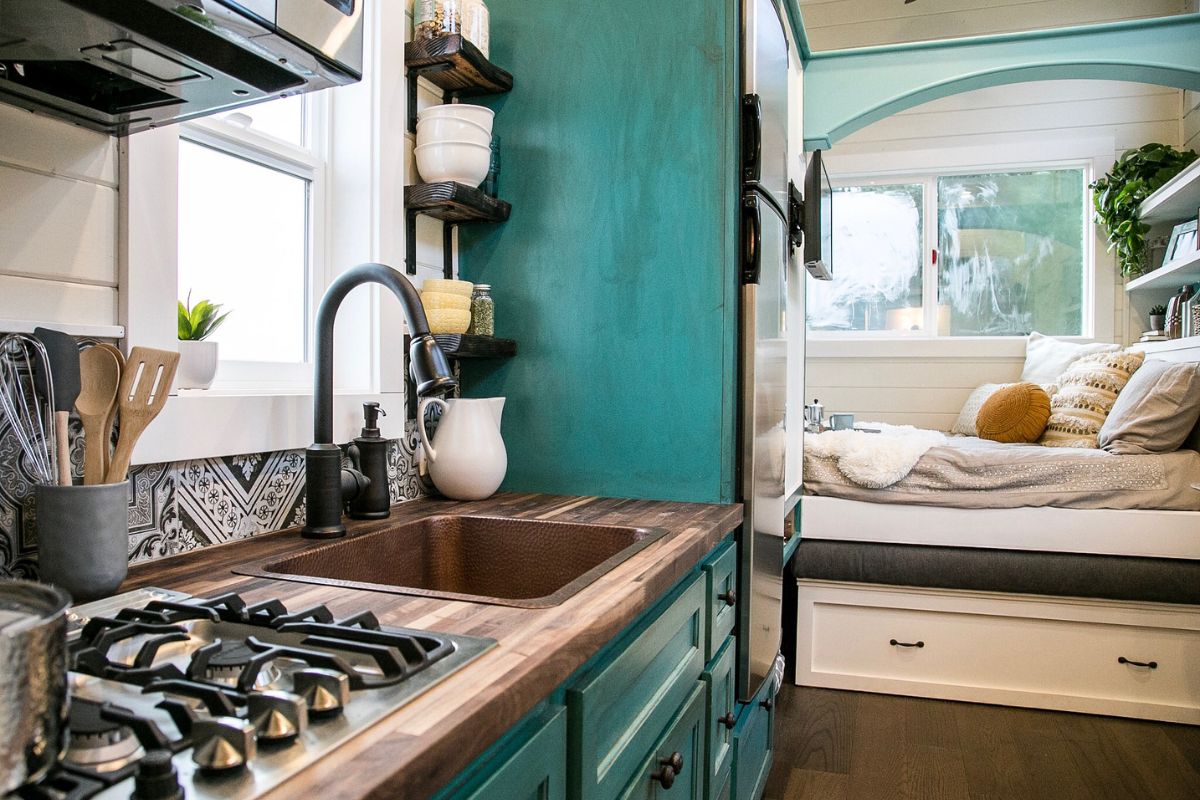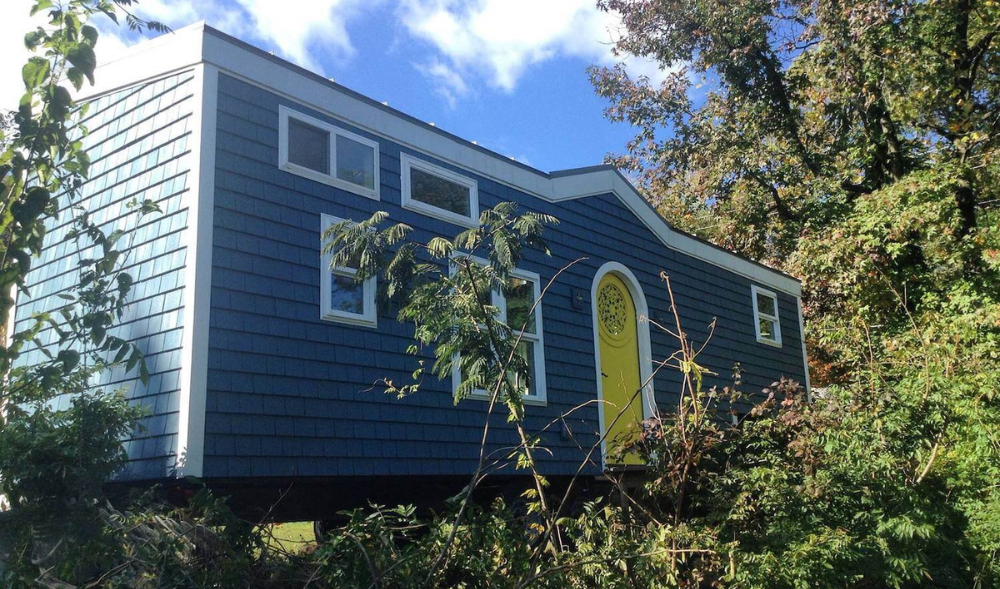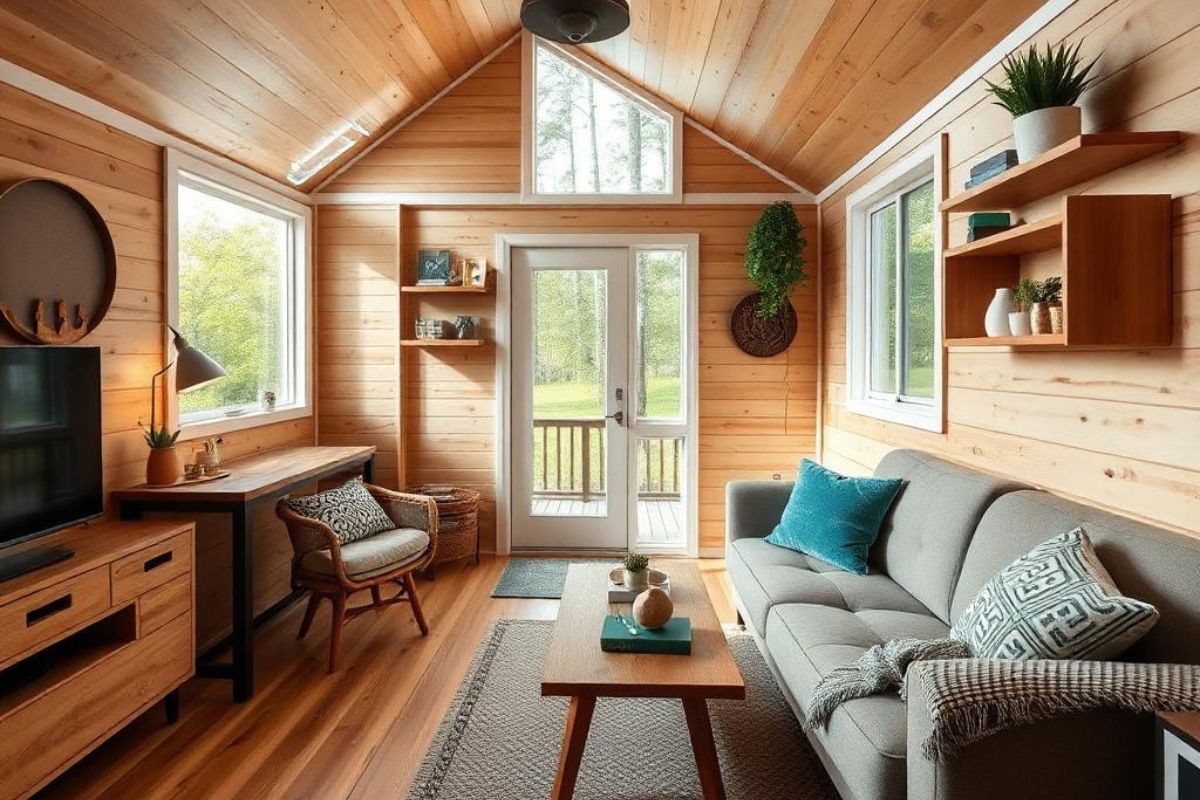You’re thinking of living in a tiny house but are having some big emotions. But as much as you’re dreaming of a simpler life with fewer bills, less clutter, and more freedom, it’s also undeniably difficult to give up space and belongings.
In fact, maybe you’re already committed. But you’ve realized that this whole ordeal goes far beyond just getting rid of a few things. Your habits, your relationships, your whole lifestyle will change with it—and that’s a scary thing.
If you’re truly decided on downsizing but are just getting cold feet, let’s go through what to expect and how to emotionally prepare for a tinier life.
Recognize That Downsizing Is Emotional (and That’s Okay)
Our homes are full of memories, routines, and little knick-knacks that make up our very identity. In fact, the average household has around 300,000 objects in it, counting everything, from expensive gadgets to old photos to single paperclips.
Letting go of, say, even half or a third of these things can be incredibly emotional.
That big bookshelf of yours contains stories you never wish to forget. That box from 20 years ago? It reminds you of one of the most fun days of your life. The garage and all the tools there? They’re your last remembrance of your grandfather.
Of course, some people are more sentimental than others. If you can easily let go of things, more power to you. If not, then remember that it’s more than okay to grieve.
Try to anticipate these emotional waves. You might feel excited one day and anxious the next. That's totally normal. Feel them when they come, and it’ll get easier with time.

Define Your “Why” and Revisit It Often
You’re likely tempted to hold on to everything. Or almost everything. It’s the number one reason why people can’t get over the hump and actually commit to downsizing.
Whenever doubt creeps in, always remind yourself why you chose it in the first place. Is it financial freedom? Environmental responsibility? A desire to travel more? A craving for simplicity?
Keep it in the back of your head. Make it visible—write it down if you have to. Only can you truly feel deep in your gut that the downsizing process is empowering and not limiting.
Small Living Requires Small Starts
Now on to more practical tips: know that you don’t have to do a 180-degree turn immediately.
If letting go of 80% of your belongings sounds terrifying (because it is for most people, then start by giving away 10-20% of it.
Start with a single drawer or shelf. Then, next week, give away another item.
Then, notice how you feel. You might feel sentimental at first, but were you really using that item? How much value did it really add to your life?
Does your house not feel lighter, cleaner, freer?
Over time, the act of letting go becomes far easier. You build momentum, and giving away items becomes something you actually want to keep doing.
Shift Your Focus from Ownership to Usefulness
We live in a world overly obsessed with material ownership. We tend to hoard things as a result, either out of a vague feeling that we are wealthier for it or a subconscious fear of destitution (“What if we need it one day?”).
However, hoarding things is not some economic safety net or symbol of prestige. They are, quite literally, simply clutter.
Instead of asking “What if we need it one day?” or “Do I want this?”, ask:
Do I use this? Does it serve a purpose in my life, in the here and now?
A good rule of thumb if you don’t know where to start: if you haven’t used it in the last year, then you probably won’t. Not in the 3 years or 5 years. Likely not ever.
Most things can be borrowed, rented, or bought again later. And most of the time, those extra bucks you save aren’t worth the clutter.

Embrace Digital Minimalism, Too
Here’s a bonus one: Physical minimalism can lead to digital minimalism, too. Chances are that you’re also overwhelmed by digital clutter as much as you are by physical clutter.
How many gadgets do you have? Apps? Email subscriptions? Cloud folders? Old downloads? All this virtual weight can feel heavy as well.
After all, it’s always been a top tip for people to simplify their digital life while they downsize their physical life. This is especially true since we handle most of our finances online nowadays. The simpler you keep your digital life, the better you can manage and protect your money from things like hackers and crypto hacks.
Prepare for Pushback—From Others and Yourself
Don’t be surprised if you experience some tension with your loved ones. Friends might say, “You’re giving up your closet space?” Family might ask, “Where will we stay when we visit?”
While, yes, you might have to make some adjustments in such situations, their concerns reflect their own discomfort with change—not something genuinely wrong with your choices.
You may even find yourself taking a step back and reconsidering. Of course, tiny living isn’t for everybody. And if you realize that it’s not for you after all, then that’s great!
But if you’re battling with hesitation despite truly knowing you want it, then know that there are ways to work through the doubt and re-center your decision.
Visualize Your Future Tiny Life
Fear often stems from not knowing. You might feel unsure if tiny living is for you because you don’t know what day-to-day life will look like.
The solution? Simply imagine it.
Imagine waking up in your tiny home. What do your mornings, afternoons, and evenings look like? Where will you sit for coffee? For meals? What do you have to do? Or not have to do. (You definitely won’t be cleaning three bathrooms or organizing another junk drawer, that’s for sure).
This is key to getting rid of anxiety. For example, if you’re worried about not having enough room to cook, think through what meals you actually make, and how a tiny kitchen could handle them.
Or better yet, write it down. The more concretely you can envision your tiny life, the better planned and more emotionally ready you will be.
If you have the budget for it, try tiny living without committing. Rent a tiny Airbnb property for a few days to get a real sense of the flow, functionality, and coziness that tiny living offers.
Get Comfortable with Multi-Use Everything

In a tiny home, many things will be multi-purpose. Your couch might also be a guest bed. Your table might fold up. Your storage might double as seating.
At first, this might feel restrictive. But over time, you’ll start to see how practical, efficient, and cozy it is—all without excess.
The key is an open mind: rethink how things “should” work and instead think of how things can work. The faster you adopt this perspective, the easier it will be to thrive in a small space.
Connect with the Tiny Living Community
Downsizing can feel lonely, especially if your friends or family aren’t on board. But you are, in fact, not alone (though you might live alone).
There’s a growing community of people who want to live smaller, yet more intentional lives. Online forums, Instagram accounts, social media pages—thousands of people get you.
And it’s a great resource too! Many people in the community know the joys and struggles of living tinier and will offer tips, stories, and support willingly.
Final Thoughts: Tiny Living, Big Life
Fear and anxiety over the shift to tiny living lie in two things: fear of the unknown and the grief of letting go.
Reframe these thoughts. The fear of the unknown? It’s a new adventure.
The grief of letting go? You’re not losing anything—it’s a chance to gain space.
There will be challenges and ups and downs. But truly, there’s nothing to worry about. Your new home will be exactly as big as it needs to be.






Share: